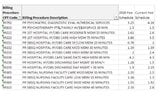I am a 4th year psychiatry resident currently starting to interview. I am receiving offers in the 300-330k range. I've spoken to around 6 hospitals so far. All jobs are located in the southeast. I will break down some of the offers. Things not mentioned (ie benefits fairly equal).
Job 1:
Patient load average is 18-20
Base is 300K
Inpatient 7 on 7 off
$ per RVU is 52
Target RVU is 4000
Compensated for call (380 a night)
Job 2:
Patient load of 20-24
Base is 320K
$ per RVU is 70
Target RVU is unknown at this time
Call is every night (light call and emergency only)- no additional compensation
Job 3
Patient load of 12-14
300K base, no production
7 on 7 off
Split call with another provider (no extra comp.)
Job 4
Patient cap is 20
300K base
Each additional patient over 20 pays out $65/patient
M-F; no required weekends
Job 5
Patient load of 18-20
310K base
RVU production model (uncapped; don't know the pay per RVU or target yet)
Call is split with another provider (no extra pay)
Job 6
Patient load of 22-24
Base is 330K (no state income tax)
RVU production (don't know details)
My questions:
Is the base that I am being offered about right? A few of these locations are rural and feel that they should be higher because of that (closer to 350K).
How much per RVU should I be expecting? I have heard around $70 per RVU.
Is 4000 target for 300K average?
Does the 1.75 rvu per inpatient encounter still sound about right?
These offers seem comparable as far as I can tell. What should I be paying attention to to help me decide? (outside of location, schools, income tax).
I would greatly appreciate any help!
Job 1:
Patient load average is 18-20
Base is 300K
Inpatient 7 on 7 off
$ per RVU is 52
Target RVU is 4000
Compensated for call (380 a night)
Job 2:
Patient load of 20-24
Base is 320K
$ per RVU is 70
Target RVU is unknown at this time
Call is every night (light call and emergency only)- no additional compensation
Job 3
Patient load of 12-14
300K base, no production
7 on 7 off
Split call with another provider (no extra comp.)
Job 4
Patient cap is 20
300K base
Each additional patient over 20 pays out $65/patient
M-F; no required weekends
Job 5
Patient load of 18-20
310K base
RVU production model (uncapped; don't know the pay per RVU or target yet)
Call is split with another provider (no extra pay)
Job 6
Patient load of 22-24
Base is 330K (no state income tax)
RVU production (don't know details)
My questions:
Is the base that I am being offered about right? A few of these locations are rural and feel that they should be higher because of that (closer to 350K).
How much per RVU should I be expecting? I have heard around $70 per RVU.
Is 4000 target for 300K average?
Does the 1.75 rvu per inpatient encounter still sound about right?
These offers seem comparable as far as I can tell. What should I be paying attention to to help me decide? (outside of location, schools, income tax).
I would greatly appreciate any help!

